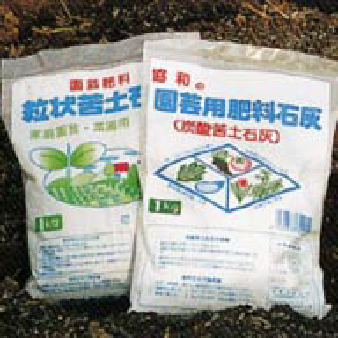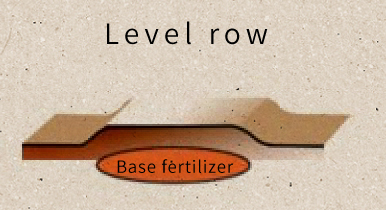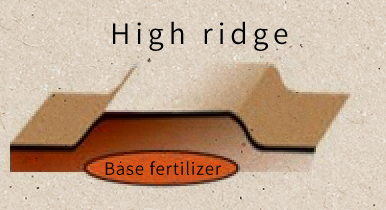
To ensure that your vegetables can grow healthily, it is important that you prepare the soil to allow their roots to spread out well for the proper absorption of water and fertilizer.
(Click here for detailed tips on cultivation.)
For this purpose, you must first effectively break up the soil and render it loose and light. This will create enough space to enable air and moisture to seep into the soil and encourage the roots of plants to spread. Where necessary, you should also distribute lime to adjust the pH level of the soil. Tools to measure the pH level of the soil can be purchased at a garden supplies store or home hardware center.
The soil in Japan, a mild country that receives a significant amount of rainfall, tends to be rather acidic. Since each type of vegetable has an ideal pH level for cultivation purposes, the degree of soil acidity should be measured before vegetables are planted. If the pH level is lower than the optimal value, it should be adjusted by dispersing lime over the soil.
For novices, we recommend the use of magnesia lime, which can be applied at the same time when preparing the soil.


In order to effectively maintain soil in a loose and light state for a long time, you should disperse organic compost and leaf mold over the ground and mix these substances into the soil.
If you are preparing a site to grow vegetables for the first time, break up the soil to a depth of at least 20 to 30 centimeters and evenly disperse a bucket’s worth (4 to 5 kilograms) of compost or leaf mold over the ground per square meter and mix these substances into the soil.
Since the roots of a vegetable plant can become damaged if the compost is not fully ripened, you should prepare the soil one to two weeks before planting.
Once you have plowed the soil, flatten out the surface, apply base fertilizer and create ridges.
(Click here for detailed tips on creating ridges.)
Ridges will vary in terms of width, interval spacing, orientation, height, and other factors according to the type of vegetable being grown, the period of cultivation, sunlight exposure, and other considerations. In order to comfortably raise a single row of vegetables that are relatively large by the time they are harvested, the ridge in such a case should ordinarily be set to a width of approximately 60 centimeters. In a narrow garden, you want to be able to grow vegetables efficiently. Thus, you should create a bed-type ridge to accommodate two rows of plants. In such a case, the width of each ridge should be set to give you a margin of error between the rows.

Suitable for vegetable gardens in deep tilth with good water drainage, enabling the land to be used effectively.

Suitable for vegetable gardens in shallow tilth with poor water drainage.